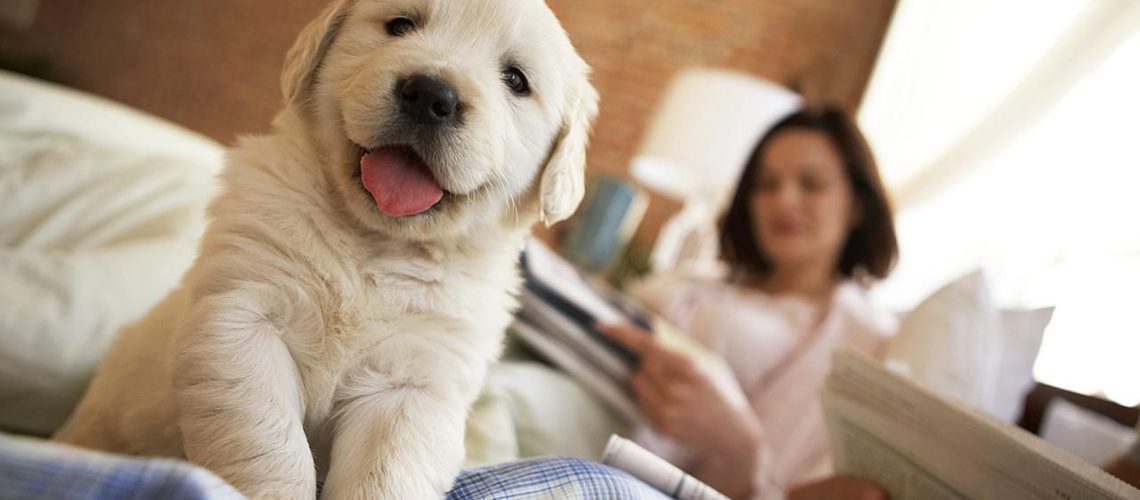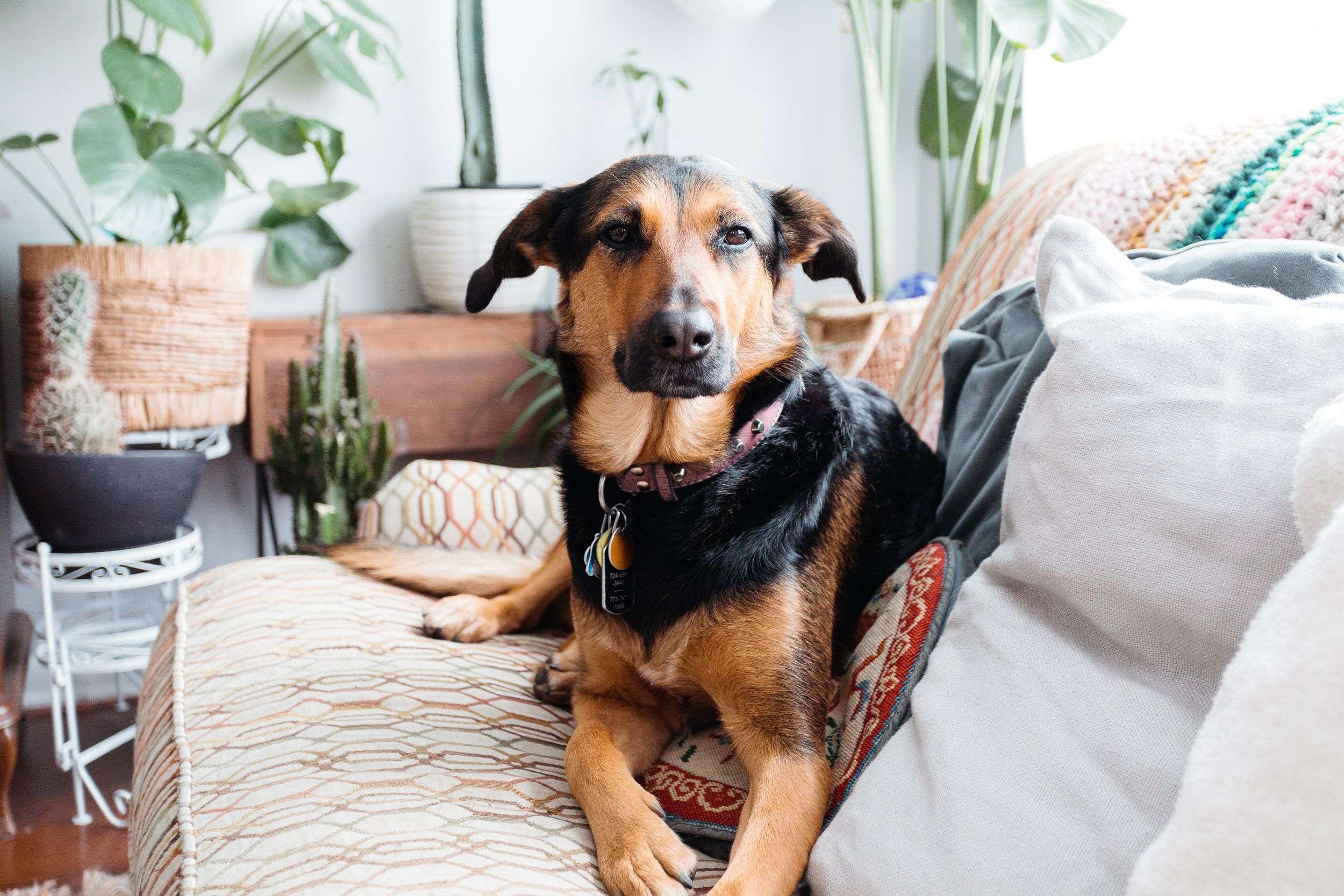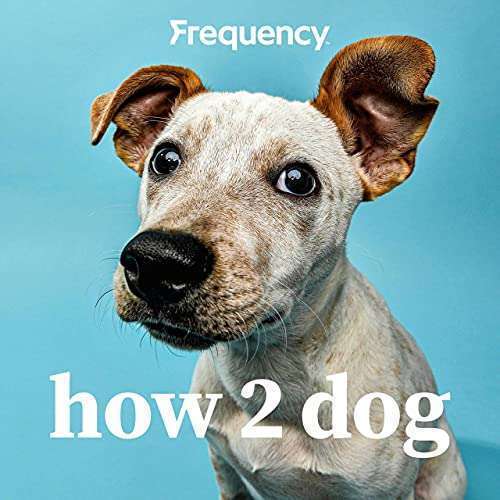Are you struggling to communicate with puppies? Discover the secrets of speaking their language and build a stronger bond with your furry friends.
Key Takeaways:
- Use a high-pitched and friendly tone to communicate with puppies, as it mimics the sounds they are familiar with.
- Make eye contact with puppies to establish trust and show them that you are paying attention to them.
- Use simple and clear commands when talking to puppies, such as "sit" or "stay," accompanied by hand gestures for better understanding.
- Avoid using negative or harsh tones when communicating with puppies, as it can confuse and scare them.
- Reward puppies with treats or praise when they respond correctly to your commands, reinforcing positive behavior and strengthening the bond between you.
The Importance of Using Dog Language When Talking to Puppies
Understanding How Puppies Communicate
When it comes to communicating with puppies, it's important to understand that they have their own language. Dogs communicate through a combination of body language, vocalizations, and scent signals. By using dog language when talking to puppies, you can establish a stronger connection and build trust with them.
Puppies rely heavily on body language to express their emotions and intentions. They use their tails, ears, eyes, and posture to convey messages. For example, a wagging tail usually indicates happiness and excitement, while a tucked tail may signal fear or anxiety. By paying attention to these cues and responding appropriately, you can help your puppy feel more comfortable and secure.
Why Using Dog Language is Important
Using dog language when talking to puppies is important for several reasons. First and foremost, it helps them understand what you're trying to communicate. Puppies are more likely to respond positively if they can interpret your cues correctly.
In addition, using dog language shows respect for the puppy's natural instincts and behaviors. It acknowledges that they are dogs with their own unique way of communicating. This can help foster a sense of understanding between you and your puppy.
Furthermore, using dog language can help prevent misunderstandings or conflicts. If you approach a puppy in a way that they perceive as threatening or aggressive, they may become scared or defensive. By using appropriate body language and vocalizations, you can convey friendliness and put the puppy at ease.
How to Tell if a Puppy is Scared or Anxious
Recognizing Signs of Fear or Anxiety in Puppies
Puppies may exhibit various signs when they are scared or anxious. It's important to be able to recognize these signs so that you can address their needs and provide comfort. Here are some common indicators of fear or anxiety in puppies:
- Tail tucked between the legs
- Ears flattened against the head
- Whining or whimpering
- Panting excessively
- Shaking or trembling
- Avoiding eye contact
- Hiding or seeking shelter
- Dilated pupils
Responding to a Scared or Anxious Puppy
If you notice that your puppy is scared or anxious, it's important to respond in a calm and reassuring manner. Avoid scolding or punishing them, as this can escalate their fear and make the situation worse.
Instead, try to create a safe and comforting environment for your puppy. Provide a quiet space where they can retreat if they feel overwhelmed. Use soothing tones of voice and gentle touches to reassure them that everything is okay.
If your puppy's fear or anxiety persists, it may be helpful to consult with a professional dog trainer or behaviorist who can provide guidance and support.
Approaching Puppies Slowly and Calmly: Why it Matters
The Importance of Approaching Puppies with Care
Approaching puppies slowly and calmly is crucial for building trust and ensuring their comfort. Quick movements or loud noises can startle them and make them feel unsafe. By approaching them in a calm manner, you show respect for their boundaries and help them feel more at ease.
Building Trust through Slow Approach
A slow approach allows puppies to assess the situation and determine if they feel comfortable interacting with you. It gives them time to sniff and observe you, which is an important part of their communication process.
When approaching a puppy, try to move at their pace. Avoid reaching out or making sudden movements. Instead, let them come to you if they feel ready. This approach helps establish a positive association with your presence and builds trust over time.
Remember, each puppy is unique and may have different comfort levels. Some puppies may be more outgoing and eager for interaction, while others may be more reserved. By respecting their individual needs and approaching them calmly, you can create a positive environment for both of you.
Understanding Puppy Body Language: Common Signals They Use to Communicate
Key Elements of Puppy Body Language
Puppies use various elements of their body language to communicate their emotions and intentions. Understanding these signals can help you better understand what your puppy is trying to convey:
- Tail: A wagging tail usually indicates happiness or excitement, while a tucked tail may signal fear or anxiety.
- Ears: When the ears are relaxed and in a natural position, it generally means the puppy is calm. If the ears are flattened against the head, it may indicate fear or submission.
- Eyes: Wide-open eyes with dilated pupils can suggest fear or stress. Soft eyes indicate relaxation.
- Posture: A relaxed posture with weight evenly distributed signifies comfort. Tense muscles or crouching can indicate fear or aggression.
Reacting Appropriately to Puppy Body Language
Being able to interpret puppy body language allows you to respond appropriately in different situations. For example, if your puppy's tail is tucked and they are avoiding eye contact, it's a sign that they may be scared or anxious. In such cases, it's important to provide reassurance and create a calm environment.
On the other hand, if your puppy's body language indicates playfulness, you can engage in interactive play to keep them mentally and physically stimulated. Understanding their signals helps you respond in ways that meet their needs and strengthen your bond.
Remember that every puppy is unique, so it's important to observe their individual body language patterns and adjust your responses accordingly.
Using Your Voice Tone to Send Messages to Puppies: How it Works
The Power of Voice Tone
Puppies are highly attuned to vocal cues and can pick up on the nuances of your voice tone. By using different tones, you can convey different messages and emotions to your puppy.
Positive Reinforcement with Happy Tone
Using a happy and enthusiastic tone of voice can convey praise and encouragement to your puppy. They will associate this tone with positive experiences and rewards. For example, when your puppy successfully follows a command or exhibits good behavior, using an upbeat tone can reinforce their actions.
Calm Reassurance with Soothing Tone
If your puppy is scared or anxious, using a soothing tone of voice can provide comfort and reassurance. Speaking softly and gently can help calm their nerves and let them know that you're there for support.
Avoiding Harsh or Angry Tones
Puppies are sensitive creatures, so it's important to avoid using harsh or angry tones when communicating with them. Yelling or speaking angrily can cause fear or confusion in puppies, which may lead to behavioral issues. Instead, focus on maintaining a calm and patient tone to foster a positive and trusting relationship with your puppy.
Proper Ways to Pet and Interact with Puppies: A Guide
Approaching for Petting
When approaching a puppy for petting, it's important to do so in a non-threatening manner. Avoid looming over them or reaching out suddenly, as this can intimidate them. Instead, get down to their level and extend your hand slowly, allowing them to sniff and approach you on their terms.
Gentle Strokes and Scratches
When petting a puppy, use gentle strokes or scratches in areas they enjoy. Many puppies enjoy being petted on the chest, back, or behind the ears. Avoid touching sensitive areas like their paws or tail unless they are comfortable with it.
Reading Your Puppy's Reactions
While petting your puppy, pay attention to their reactions. If they lean into your touch, wag their tail, or show other signs of enjoyment such as relaxed muscles, it indicates that they are enjoying the interaction. However, if they pull away, tense up, or show signs of discomfort like growling or snapping, it's important to stop and give them space.
Remember that each puppy has individual preferences when it comes to physical contact. Some may love belly rubs while others may not enjoy being touched in certain areas. By respecting their boundaries and reading their reactions, you can ensure a positive and enjoyable interaction for both of you.
Avoiding Direct Eye Contact with New Puppies: Here's Why
The Significance of Eye Contact in Dog Language
In dog language, direct eye contact can be seen as a challenge or threat. It is a behavior that is more commonly observed in dominant or aggressive dogs. When you make direct eye contact with a puppy, especially one who is not familiar with you, it can make them feel uncomfortable or defensive.
Building Trust through Soft Gaze
To create a sense of trust and comfort, it's best to avoid direct eye contact with new puppies. Instead, use a soft gaze by looking slightly away or blinking slowly. This signals to the puppy that you are not a threat and allows them to feel more at ease in your presence.
Allowing Puppies to Initiate Eye Contact
While avoiding direct eye contact, it's important to give the puppy the opportunity to initiate eye contact if they feel comfortable doing so. Some puppies may choose to make brief eye contact as a way of connecting with you. If this happens, maintain a soft gaze and avoid staring intently.
By respecting their boundaries around eye contact, you can create an environment where your puppy feels safe and secure.
Deciphering Playfulness or Need for Alone Time in Puppies: Signs to Look For
Signs of Playfulness in Puppies
Puppies often display specific behaviors when they are feeling playful. These signs indicate that they are ready for interaction and engagement:
- Bouncing or pouncing movements
- Tail wagging energetically
- Bowing down with front legs extended
- Playful barks or growls (different from aggressive barks)
- Inviting body language, such as play bows or pawing at you
Recognizing the Need for Alone Time
While puppies enjoy playtime and social interaction, they also need periods of rest and alone time to recharge. It's important to recognize when your puppy may be seeking some quiet time:
- Retreating to a secluded area
- Lying down with relaxed muscles
- Avoiding engagement or play invitations
- Closing their eyes or dozing off
Balancing Play and Rest for a Happy Puppy
Understanding your puppy's signals for playfulness or the need for alone time allows you to provide a balanced routine. Engage in interactive play when they are showing signs of readiness, but also ensure they have quiet spaces where they can relax undisturbed.
By respecting their need for both play and rest, you can help create a harmonious environment that promotes their overall well-being.
Puppy Communication 101: Commands and Cues They Understand
The Power of Clear Commands and Cues
Puppies are capable of learning and understanding various commands and cues. By using clear and consistent language, you can effectively communicate your expectations to them.
Common Commands for Basic Training
Here are some common commands that puppies can learn:
- Sit: Teach your puppy to sit by gently pushing their hindquarters down while saying "sit." Reward them with praise or treats when they comply.
- Stay: Encourage your puppy to stay in one place by using the command "stay" while holding out your hand as a visual cue. Gradually increase the duration before rewarding them for staying put.
- Come: Teach your puppy to come to you by using the command "come" while crouching down and using encouraging gestures. Reward them generously when they come to you.
- Leave it: Train your puppy to leave objects or food alone by saying "leave it" and offering an alternative, such as a toy or treat. Reward them when they let go of the desired object.
Using Consistent Body Language with Commands
In addition to verbal commands, puppies also respond well to consistent body language cues. For example, raising your hand palm-up can signal a "stay" command, while pointing in a specific direction can indicate where you want them to go.
Consistency is key when training puppies. Use the same commands and cues each time, and reward them for their successful responses. With patience and practice, your puppy will learn to understand and follow your commands effectively.
| Conclusion | |
| Topic: | How to Talk to Puppies With Dog Language |
| Key Points: | - Understanding dog body language - Using a calm and friendly tone - Using positive reinforcement - Being patient and consistent in training |
In conclusion, communicating effectively with puppies using dog language is essential for building a strong bond and understanding. By learning how to interpret their body language, using a gentle tone, providing positive reinforcement, and maintaining consistency in training, you can establish clear communication channels with your furry friend. Remember, patience and practice are key in mastering the art of talking to puppies
How do I talk to my dog in dog language?Dogs have the ability to detect even the slightest changes in your body language, tone of voice, and signals. Just by adjusting the pitch of your voice, you can convey different messages to your dog. Higher pitched sounds typically indicate excitement and can be used to express happiness or energize a dog during training. Do puppies like when you talk to them?Do dogs enjoy being spoken to? Absolutely! A study published in Animal Cognition revealed that both puppies and adult dogs pay close attention to the high-pitched voice commonly used when speaking to babies, as well as the more consistent tone used when speaking to adults. How do I get my puppy to understand the word no?After calming them down, you will once again position your open hand at their eye level, approximately 6 inches away from their mouth. When they attempt to grab it, quickly close your hand into a fist and say "No." Repeat this sequence five times, then take a break for five minutes. This cycle of five repetitions followed by a five-minute break constitutes one session. How do puppies say I love you?Your dog communicates a lot through their eyes, and you can respond to them using the same visual language. When a dog maintains long eye contact with you, it is a way of expressing love. A recent study has shown that oxytocin, which is known as the "love chemical," increases in both dogs and humans when they engage in a gentle gaze. How do puppies say thank you?Dogs often display their affection and gratitude by licking their owners, typically targeting their faces, hands, or feet. This action is seen as a gesture of love and appreciation, as well as a display of submission and trust. What does it mean when a dog puts his paw on you?Why does my dog place its paws on me? Besides being a way to show affection, your dog may use its paws to seek attention, such as needing food or a bathroom break. Anxious dogs may also paw at you for comfort or to ask for some personal space. Some dogs may paw at you to indicate that they want to engage in some physical activity.
More Reads
Dr. Clara Bennett
Hello, fellow pet enthusiasts! I'm Dr. Clara Bennett, your go-to expert on all things pets. With a background in veterinary medicine and a passion for nutrition, I've spent years diving deep into the world of cats, dogs, birds, horses, and the products that keep them thriving. From the English countryside, I've witnessed the magic of animals and am here to share my knowledge, ensuring your pets receive the best care. Together, let's master the art of pet care!
All Posts »
Next Steps In Mastering Cat CareNext Steps In Mastering Dog CareJoin Our NewsletterSubscribe to receive our latest updates in your inbox! | |
















